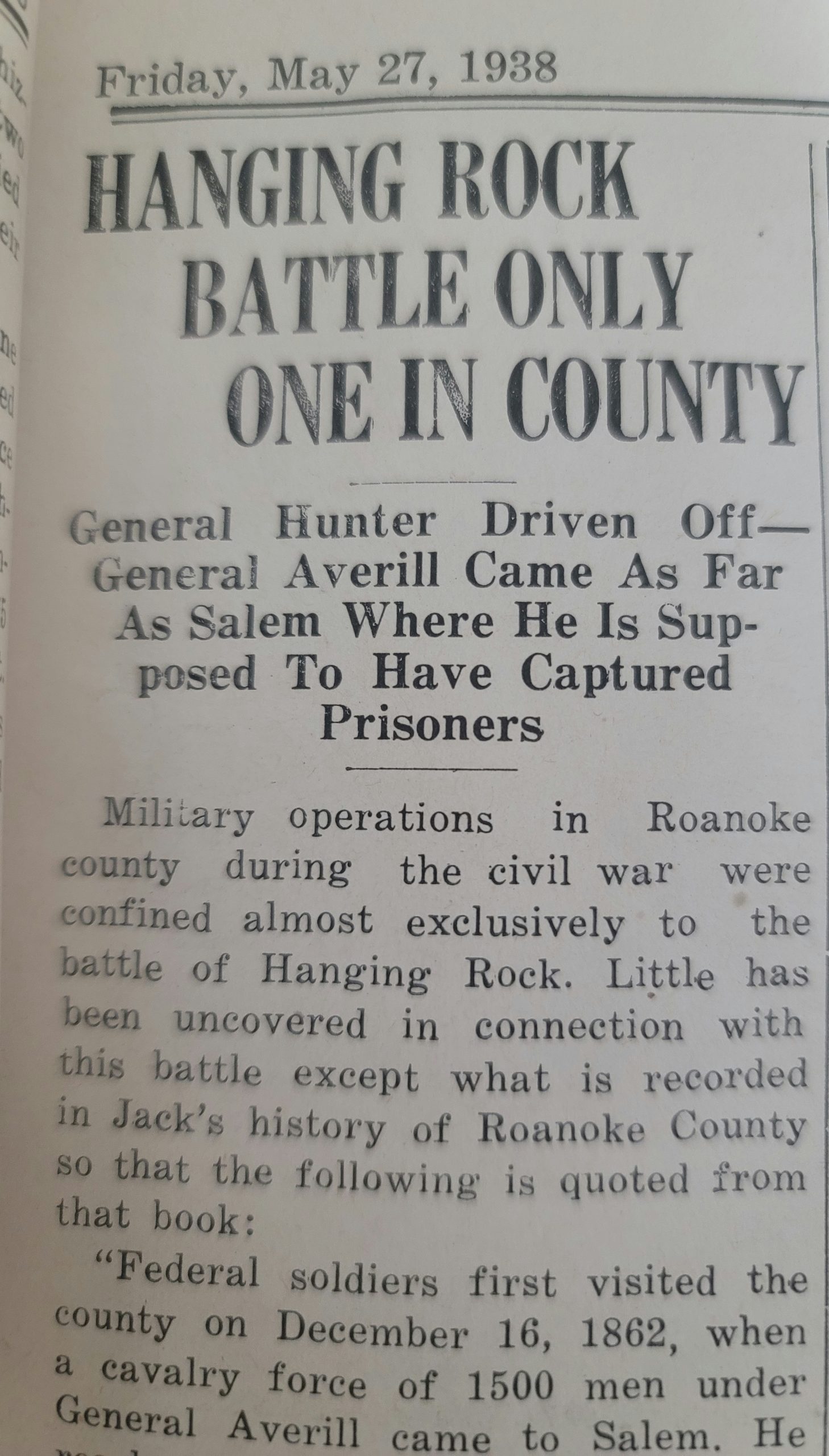
General Hunter Driven Off-General Averill Came As Far As Salem Where He Is Supposed To Have Captured Prisoners
From the 1938 centennial edition of The Times-Register
Military operations in Roanoke county during the civil war were confined almost exclusively to the battle of Hanging Rock. Little has been uncovered in connection with this battle except what is recorded in Jack’s history of Roanoke County so that the following is quoted from that book:
“Federal soldiers first visited the county on December 16, 1862, when a calvary force of 1500 men under General Averill came to Salem. He reached Hanging Rock about 8 0’clock in the morning and left a force of 500 men to guard the road leading to Big Lick. On entering Salem, he fired several buildings and captured about fifty prisoners. When he returned to Hanging Rock that night his army camped in Mason’s Cove; early the following morning moved west and passed over the mountain into West Virginia.”
Hunter Defeated
In June, 1864, Gen. Hunter after spending several days in Buchanan and burning the town, went on to Lynchburg with a force of twenty thousand men, and was defeated by General Early. Forced to retreat hastily he came back through Roanoke county, passed out by Hanging Rock, reaching that point on June 21, and began going through the gap about 7 o’clock in the morning. Two hours later General McCausland, with a small force reached the scene and opened fire on the lines from the east side of Mason’s Creek. This was continued for an hour or more, when one of Hunter’s divisions crossed the stream about a mile below and flanking him compelled him to retreat by way of Green Ridge in the direction of Botetourt Springs, carrying with him about forty prisoners and forty horses. Skirmishing and sharpshooting were kept up throughout the day.”
The federal loss was seven killed and forty wounded. The dead were left on the field and afterwards buried by the confederates; later they were moved to the national cemetery in Staunton, Va. The wounded were borne away by the fugitive army. Two of General McCausland’s men, Whitworth of Montgomery county, and Kale of Monroe County, West Va., were killed and both buried on the land of Benjamin Brubaker. Quite a few of the confederates were wounded but all recovered.”
“At four o’clock in the afternoon Hunter’s rear guard passed through the Gap, just an hour before General Early’s advance guard arrived at that point. Had the two armies met, Roanoke county would have been the scene of the bloodiest conflict of the war. Early realized that it would be futile to attempt to further pursuit as the enemy was in possession of the mountain passes.”
“The residence of John Garst was burned by a detachment of Hunter’s army after having destroyed all his artillery trains, etc. There are many old people living today who distinctly remember the detonations when he blew up his caissons.”
“General Hunter then made his way to the Ohio River at Point Pleasant. The third federal force to enter the county was immediately after the surrender of General Lee at Appomattox. A detachment of General Stoneman’s brigade of Michigan cavalry burned the depot at Christiansburg on April 9, the day of Lee’s surrender, and then started eastward, burning depots and tearing up the railroad a distance of forty miles ending at Bonsack depot.”
-Prepared by Lisa King




